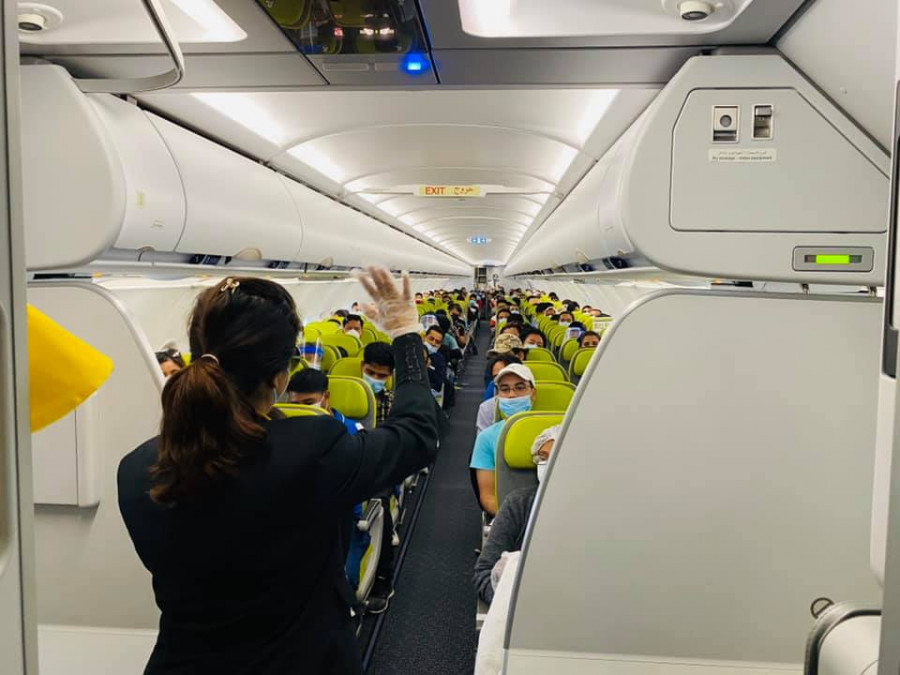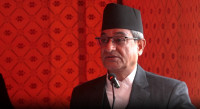National
Nepal to join India’s ‘air bubble’ scheme to repatriate Nepalis from India as Dashain draws closer
Under the scheme, passengers need to book tickets through the embassies and they have to go through quarantine as specified by respective governments.
Sangam Prasain
Nepal has decided to join India’s “air bubble” scheme in order to bring hundreds of Nepalis stranded in different parts of India, more than a month after the southern neighbour’s proposal to that effect.
As India has still restricted regular international passenger flights, “air bubbles” or “travel corridors” are systems established between two countries that perceive each other to be safe and allow carriers of both the countries to fly passengers either way without any restrictions.
Under these arrangements, the fares will be fixed and passengers need to book tickets through the embassies. The passengers have to go through quarantine as specified by the respective governments.
In mid-August, India’s civil aviation minister Hardeep Singh Puri had proposed Nepal join the air bubble scheme.
“We had received the proposal formally from the Indian government three weeks ago,” said Rajan Pokhrel, director general of the Civil Aviation Authority of Nepal.
India has established travel bubbles with 13 countries, including the United States, the United Kingdom, France, Germany, Canada, the Maldives, the United Arab Emirates, Qatar, Bahrain, Nigeria, Iraq, Afghanistan and Japan.
After necessary discussions, Tourism Minister Yogesh Bhattarai will table the agenda on joining the air bubble scheme at the Covid-19 Crisis Management Centre meeting this week, which will then seek an in-principle approval from the Cabinet, according to Pokhrel.
“This will, in fact, help us create an air corridor to the southern neighbour on a reciprocal basis, which has still restricted regular passenger flights,” said Pokhrel.
As Nepal’s biggest festival season is approaching, hundreds of Nepalis working, studying and those gone for medical treatment in India could benefit from the scheme.
“The Indian government can also repatriate its citizens from Nepal,” said Pokhrel.
There is no exact data on the number of Nepalis stranded in India, but officials in Nepal’s embassy in India said such people could be in the thousands.
However, around 1,000 are waiting for immediate flights, according to the embassy officials.
Amid uncertainties, Nepal Airlines has also called back its employees from New Delhi and Mumbai and Bangalore in India.
Hari Odari, spokesperson for the Nepali Embassy in New Delhi, said they have requested the Foreign Ministry in Kathmandu to arrange flights between Kathmandu and Delhi following health safety protocols.
“Currently, people are leaving for Kathmandu via surface transport and if the plans to resume flights materialise, we can ascertain the number of actual flyers to Nepal,” he told the Post.
A large number of Nepalis living and working in India are worried as Nepal has not resumed flights to its immediate neighbour, although international flights were allowed to resume from September 1, after five months of stoppage.
“There is still no word on whether flights to and from India will also be allowed from October 1. Tens of thousands of Nepali students, families and patients who had gone to India for treatment have been stuck there for six months. Can @yogesbhattarai, explain why?” Bishow Parajuli, United Nations World Food Programme Representative and Country Director in New Delhi, India, tweeted recently.
On September 1, the government allowed regular passenger flights to resume.
However, only Nepalis and representatives of diplomatic missions, the United Nations and development partners were allowed to fly into Nepal. The government has allowed tourists—trekkers and mountaineers—to come to Nepal from October 17.
“We opened international passenger flights a month ago,” said Pokhrel of the civil aviation body. “And from Thursday onwards, we are allowing unlimited flights.”
On Wednesday, the Civil Aviation Authority of Nepal approved 98 weekly flights—14 flights a day—starting from Thursday, from five flights allowed before, in order to facilitate passengers’ movement, particularly for Nepalis coming for the Dashain festival.
In the peak October-November period, during a normal situation, the Nepali skies normally see as many as 90 international flight movements daily. In New Delhi alone, the most lucrative route, there used to be 11 flights daily.
“The southern neighbour, however, has still not opened scheduled flights,” said Pokhrel. “We are ready to allow any frequency between Kathmandu and New Delhi, but India has its arrangement, which currently is the air bubble.”
Suresh Raj Neupane contributed reporting from New Delhi.




 8.12°C Kathmandu
8.12°C Kathmandu















